
Αν κρατήσουμε μια γάτα ανάποδα (με την πλάτη προς τα κάτω και τα πόδια προς τα πάνω) και την αφήσουμε να πέσει, θα κατορθώσει να περιστραφεί και να προσγειωθεί με τα πόδια της, ακόμη και αν δεν έχει καθόλου αρχική στροφορμή.
Η αναστροφή με μηδενική στροφορμή μπορεί να πραγματοποιηθεί με περιστροφή του ενός μέρους του σώματος ως προς το άλλο.
Καθώς η γάτα πέφτει, μετακινεί τα πόδια και την ουρά της, αλλάζοντας έτσι τη ροπή αδράνειας της.
Όσο διαρκεί η διαδικασία αυτή, η ολική στροφορμή παραμένει μηδενική.
Όταν ολοκληρωθεί, η γάτα πέφτει με τα πόδια της προς τα κάτω.
Με τη διαδικασία αυτή, το σώμα στρέφεται κατά κάποια γωνία, αλλά δεν προκαλείται συνεχιζόμενη περιστροφή.
Αν συνέβαινε αυτό, θα παραβιαζόταν η διατήρηση της στροφορμής.
(ΠΗΓΗ: «Οι έννοιες της Φυσικής» του Paul Hewitt
Μετάφραση: Ελένη Σηφάκη, Γιάννης Παπαδόγγονας
Πανεπιστημιακές Εκδόσεις Κρήτης)
Η αναστροφή με μηδενική στροφορμή μπορεί να πραγματοποιηθεί με περιστροφή του ενός μέρους του σώματος ως προς το άλλο.
Καθώς η γάτα πέφτει, μετακινεί τα πόδια και την ουρά της, αλλάζοντας έτσι τη ροπή αδράνειας της.
Όσο διαρκεί η διαδικασία αυτή, η ολική στροφορμή παραμένει μηδενική.
Όταν ολοκληρωθεί, η γάτα πέφτει με τα πόδια της προς τα κάτω.
Με τη διαδικασία αυτή, το σώμα στρέφεται κατά κάποια γωνία, αλλά δεν προκαλείται συνεχιζόμενη περιστροφή.
Αν συνέβαινε αυτό, θα παραβιαζόταν η διατήρηση της στροφορμής.
(ΠΗΓΗ: «Οι έννοιες της Φυσικής» του Paul Hewitt
Μετάφραση: Ελένη Σηφάκη, Γιάννης Παπαδόγγονας
Πανεπιστημιακές Εκδόσεις Κρήτης)
Η εξήγηση από το βιβλίο «Mechanics Vibrations and Waves» των Akrill and Millar (1974) στο πρωτότυπο:
If you hold a china cat with its paws pointing upward and release it without rotation, it lands on its back, but if you drop a live cat in exactly the same manner it lands on its paws.
There is no need for the live cat to “cheat” in any way by struggling as it is held – you really can release it without rotation, so that its initial angular momentum, about any axis through its centre of mass, is zero.
This is perhaps the most intriguing example of the way in which non-rigid bodies (in this case the live cat) seem, at first sight, to flout the rules we learn for rigid bodies and particles, for if a body has zero angular momentum about its centre of mass at the start of its fall it should have zero angular momentum about its centre of mass throughout its fall, as the only external force acting on it is the pull of the Earth, which exerts zero torque about the centre of mass.
Perhaps the cat uses air resistance to produce an extra external force? In falling a few meters the air resistance forces are negligible.
The cat behaves as if it were more than one body: it rotates its hind legs in one sense about a horizontal axis through its centre of mass and rotates its front legs and head in the opposite sense.
If it were now to reverse this move it would finish up where it started, but not if it were first to alter the moments of inertia of the upper and lower parts of its body respectively (for example by pulling in its front paws).
The process is difficult to imagine but if a sturdy turntable is available you could try to perform the following routine, which allows a human being to perform a rotation about a vertical axis even though no external torque acts on him: he should
(a) place his legs horizontally and arms vertically while sitting on the table
(b) rotate his legs to the right
(c) draw in his legs as far as possible and stretch his arms out horizontally
(d) rotate his arms to the right until his arms and legs above one another
(e) return to position (a).
With a properly levelled turntable on good bearings a net rotation of at least π/6 rad can be achieved and yet at no time during the process did the whole system any net angular momentum about a vertical axis.
The cat achieves its rotation in a similar way though its body is so supple and its actions so quick that even with slow motion film it is not easy to reduce them to a sequence such as that given for the human being on the turntable.
Moreover the cat has to achieve a rotation of π rad in a matter of less than half a second.














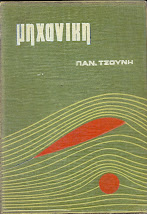
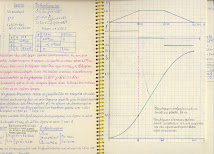






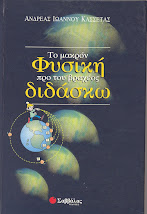


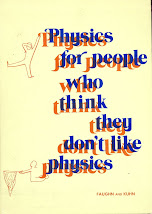





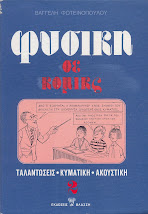
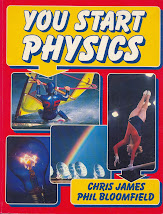

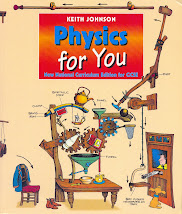





Δεν υπάρχουν σχόλια:
Δημοσίευση σχολίου